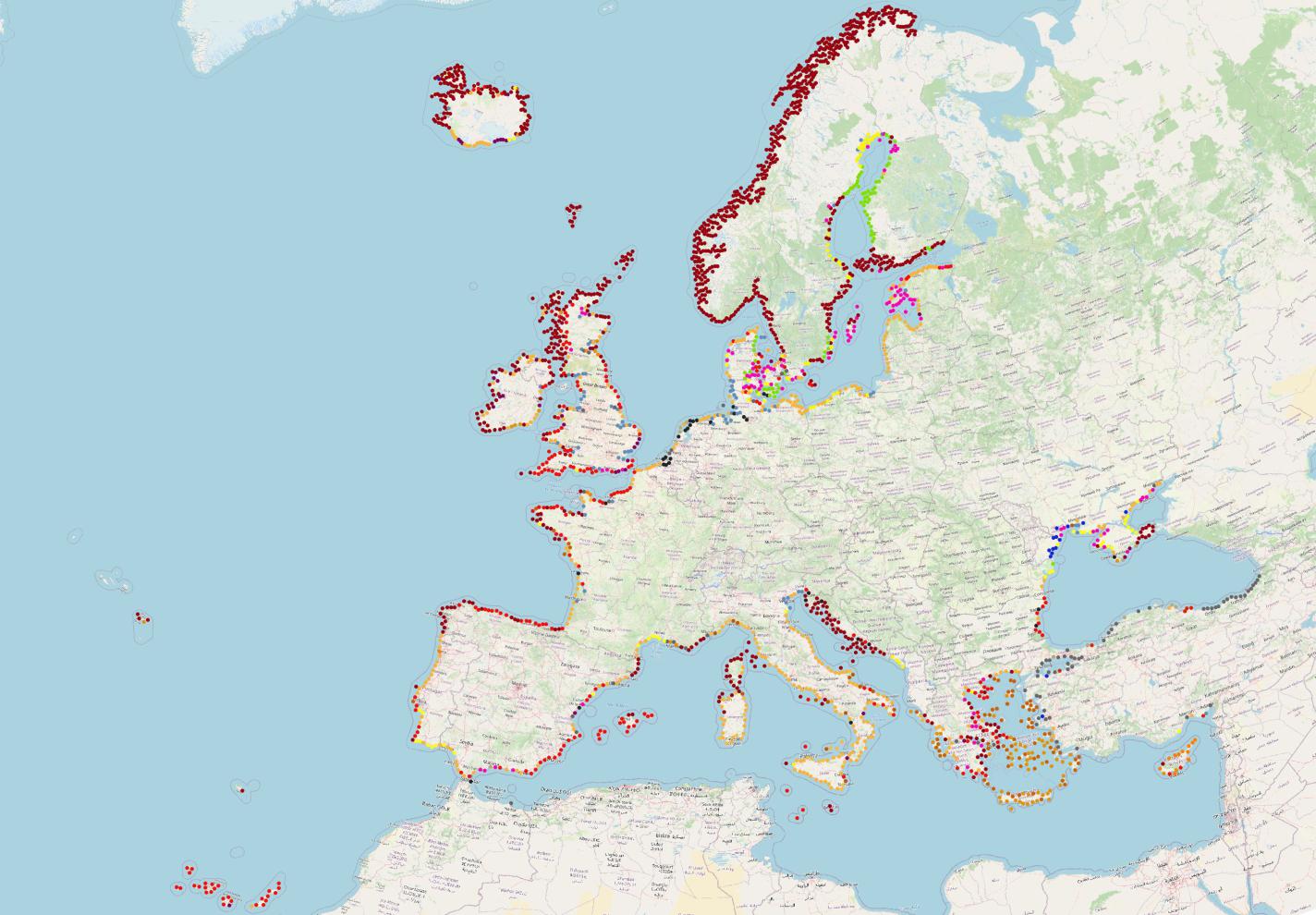New EMODnet Geology map on coastal type - Increased coverage for the 2004 pan-European shoreline-migration map

Europe’s coast is as diverse as its people. It reflects a long history of rock formation and disintegration over many millions of years. One of its main characteristics, coastal type, shows the combined effect of geology and human influence. Together, these have a direct influence on vulnerability and resilience to climate change. Hard rocky cliffs, soft sandy beaches, pristine estuaries and man-made harbours are all intertwined with our economies in their own particular way. They affect our short- and long-term safety, and are a big part of our well-being. Being able to visualise coastal type from Iceland’s western fjords to Ukraine’s eastern sand spits sets the stage for sustainable long-term coastal policy.
The new EMODnet Geology map on coastal type, released today and freely accessible from the EMODnet Geology portal, builds on the EUROSION map of coastal type released almost twenty years ago. It fills gaps and gives a first-order indication of vulnerability and resilience for policy makers, identifying areas of potentially irreversible future change.
This important data product allows users to visualise pan-European coastal type at different spatial scales. A built-in search and zoom functionality enables online users to distinguish areas marked by rocky coasts, (pocket) beaches of sand and gravel, muddy tidal basins and estuaries, and man-made coastlines such as harbours and dams.
To access the map on coastal type, visit the EMODnet Geology portal:
www.emodnet-geology.eu
